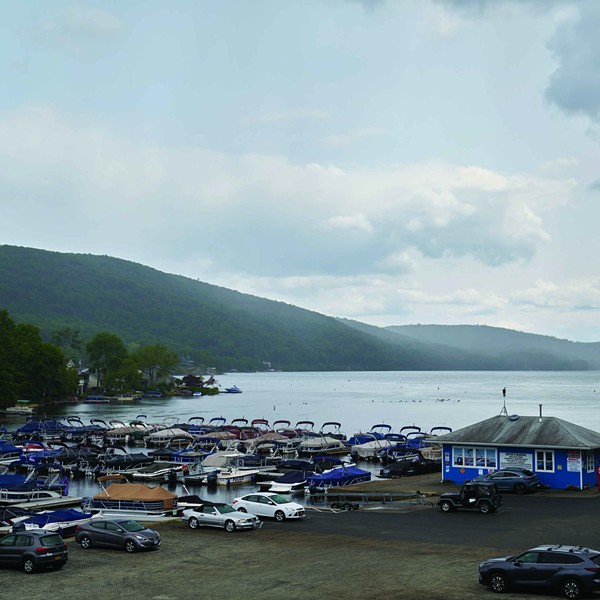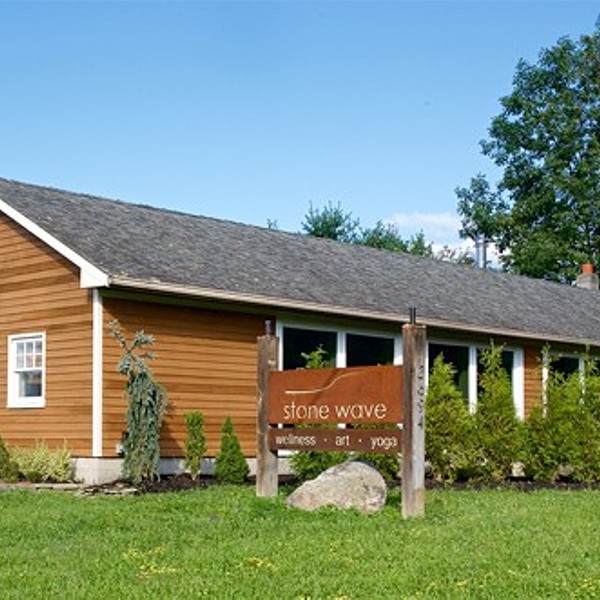Anyone who lives around the Orange County area will remember numerous write-ups about Warwick’s battles against box stores, most famously against CVS, which replaced a bankrupt Grand Union’s vacant downtown lot. The clash even made the pages of the New York Times.
Today, the concern is over the development of the Route 94 corridor, which is currently home to a couple of orchards and farms, scenic rural vistas, and a strip mall that houses a ShopRite and a RiteAid. The area is positioned for further strip mall development, with plans detailing a Price Chopper and other potential stores that will be erected near the entrance of the village.
“It’s been a priority to get resolution [on the Route 94 project] so that whatever happens there doesn’t become a drain to the vibrancy of the downtown area,” says Village Mayor Michael Newhard. “What’s happened here over time is significant in terms of the development of a business district. It’s not just Main Street, it’s also lateral streets, like Railroad Avenue and Spring Street and South Street. It’s grown in such a way that I’ve described it as a renaissance of small business.”
Still, Newhard says, “there’s a careful balance that has to happen. There are a lot of possibilities on the outskirts of the village, in the town, that may actually destroy the growth pattern in the village.”
It’s a growth pattern to be proud of. Business in Warwick has remained resilient during the down economy, to say the least. The number of shuttered storefronts has been nominal, and in contrast, Michael Johndrow, executive director of the Warwick Valley Chamber of Commerce, estimates that there have been 35 grand openings in the area since the financial slump began. Businesses survive here, even if they feel a bit of an effect. “My money is off but there are people coming in the door,” says Yesterday’s restaurant owner John Christison. “The head count is still the same, but they’re spending different.” He credits the community as a whole for supporting local business in tough times, and specifically collaborations between business owners and the merchant guild and chamber of commerce. “It’s not just one of us doing it,” he says, “we all put ideas in and make it work.”
A Committed Community
Where do these good ideas come from? Warwick seems to have no shortage, not partly due to its abundance of community activism in the form of various organizations, boards, and committees. There’s an architectural and historic review board that makes sure the village is preserving its charm. There’s Community 2000, a nonprofit umbrella organization that puts together cultural events like the annual Warwick Summer Arts Festival. There’s the Think Local First committee, organized by the Warwick Valley Chamber of Commerce, that tries to pump up the local economy by promoting the virtue of the village’s own offerings. And there’s an overwhelmingly popular leadership—Mayor Newhard and town supervisor Michael Sweeton are known for their good rapport with each other and the community, and the superintendent of the school district, Raymond Bryant, is gaining recognition for his efforts to supply the schools with locally sourced goods (like apples, for instance).
The motive is simply to keep Warwick what it is while changing it for the better. While preservation takes a priority, the villagers are quick to acknowledge that they’re not opposed to development, they just want smart development. Take the residential situation, for example. A local hospital has made living in Warwick an attractive option for senior citizens, and there are now five communities that cater to this demographic. Warwick Grove, one of the newest housing options for active adults 55 and older, is often described as the model, the ideal for any type of expansion. Working with the developers, Leyland Alliance, the 130-acre town home, condominium, and single family home project was approved because Leyland was sensitive to the character of the surrounding village and designed the new-build homes with those traditional architectural elements in mind. (The Leyland Alliance also donated two acres for the town’s new $9 million library, which opened in November.) The local government nixed a plan for a commercial aspect to the community, so that existing Warwick businesses wouldn’t suffer. This regulation of building has been the key to maintaining the personality of the place while also allowing it to grow, says Newhard. There’s no lack of interest in developing Warwick land—just strict moderation on what gets approved and how it’s done.
















